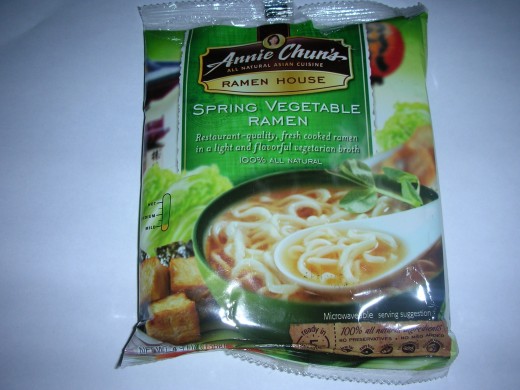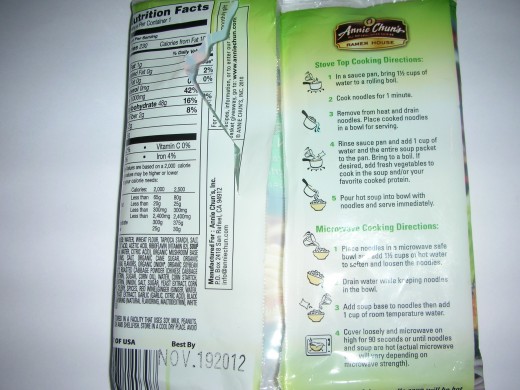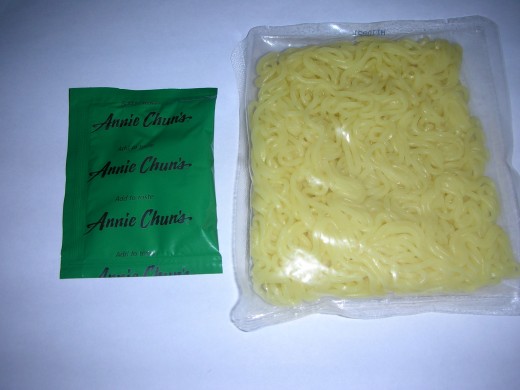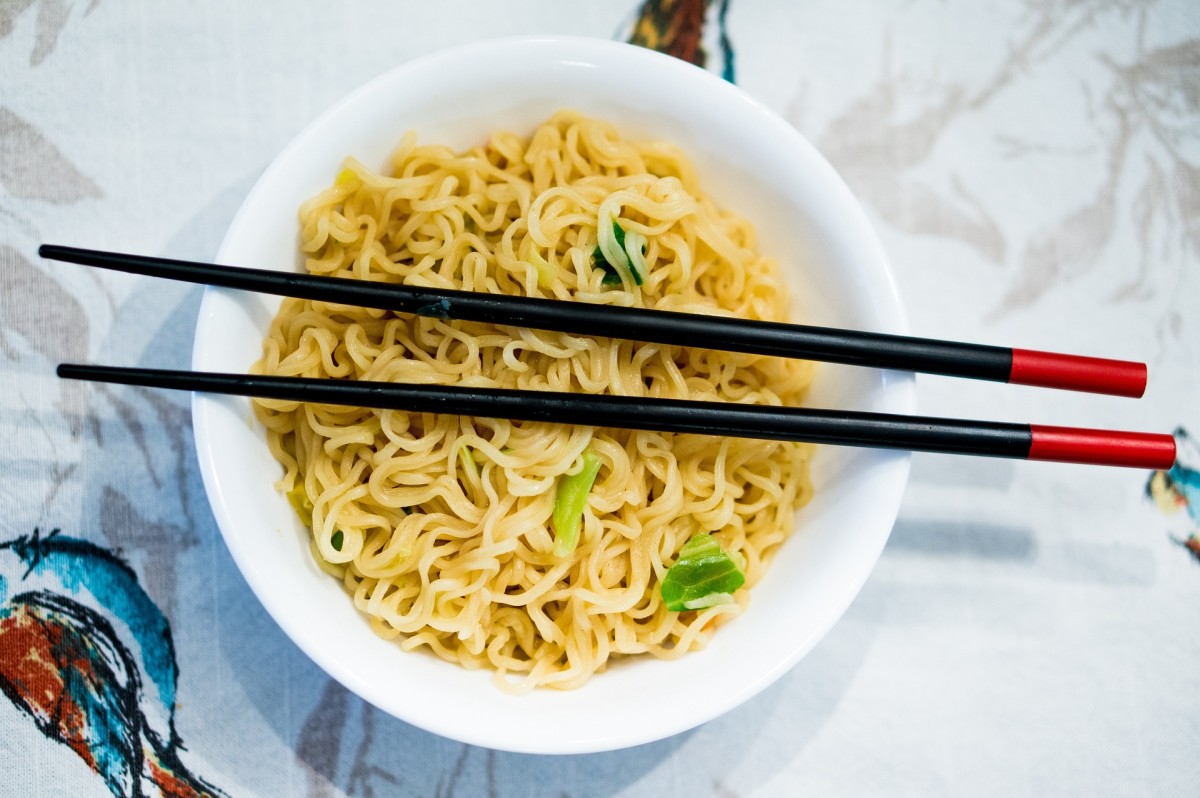Annie Chun’s Spring Vegetable Ramen: Product Review

Ramen is a meal that I grew up loving. However, the ramen I am used to comes from a very popular company where you can buy a ton of them for a very low price. College students live off of it, and in many places they are affectionately called “oodles and noodles” instead of “oodles of noodles.” Where I grew up—Tacoma, WA—it was not uncommon to have a pantry full of these dry noodles on hand in every flavor.
As an adult, I finally started reading labels and becoming more conscious about what I put in my body. By no means am I the healthiest eater on the planet, but I get in a lot of fruits and vegetables and am always looking for healthier alternatives to my favorite foods. This is what led me to a lot of Annie Chun’s products. As you know, I am already in love with Annie Chun’s roasted sesame seaweed snacks. But I am now becoming familiar with more from their product line. Thus, today I am writing about Annie Chun’s Spring Vegetable Ramen.
Overview:
So, hopefully you read my endearing introduction about how I grew up on ramen. But if you are pressed for time, you are probably just wondering: so is it any good? I will answer right away by saying, yes.
There are several reasons Annie Chun’s ramen is good. Some include the taste, no preservatives, no msg, low fat, dairy free, and vegan. This is obviously not an exhaustive list. The main package describes their Spring Vegetable Ramen as “Restaurant quality, fresh cooked ramen in a light and flavorful vegetarian broth” that is 100% all natural. I totally agree that the broth is light with a good flavor combination. I did find the broth to be a little spicy, but I find table pepper and red bell peppers spicy, so I am probably not the best judge in that department. The package ranks this ramen as mild on a scale ranging from mild to hot. So I have to believe this to be true since my seaweed snacks are also rated as mild. And you know how much I love them.

Cooking:
There are two sets of directions for cooking the ramen, stovetop and microwave. And both sets of directions have illustrations that make following the steps very straightforward. Since I am a gal of convenience, I followed the directions for the microwave. And that is the information I will provide here.
There are four steps for making the ramen using the microwave, which are simplified here:
- Put noodles in bowl and cover with hot water.
- Drain water
- Add soup base and 1 cup of water
- Cover and microwave for 90 seconds
The cover of the packaging says the ramen is ready in 5 minutes. I was able to get it done in less than that. And that included running after the kids as they tried to steal things from me. So it really is a great alternative to other pre-packaged ramen, even with the extra step of soaking the noodles for a bit. But you must remember that these ramen noodles are fresh and not dried.
Nutrition Facts:
Component
| Amount
|
|---|---|
Calories
| 230
|
Calories from fat
| 10
|
Total Fat
| 1g
|
Saturated Fat
| 0g
|
Trans Fat
| 0g
|
Cholesterol
| 0mg
|
Sodium
| 1000mg
|
Total Carbohydrates
| 48g
|
Dietary Fiber
| 2g
|
Sugars
| 2g
|
Protein
| 8g
|
Vitamin A
| 2%
|
Calcium
| 4%
|
Iron
| 4%
|
The whole package is considered one serving

Some Tips:
- As mentioned above, the broth is really light, which is great for seasons like summer. But the bit of spice makes it bold enough for winter. I suggest cutting the 1 cup of water back a little if you want more of the delicate flavors to be more prominent.
- Even though there is already a fair amount of sodium in the ramen, I found that adding some sea salt helped balance the “spiciness” for me.
- Use a good size bowl if you are adding a full 1 cup of water. I used one of our standard microwave bowls and found there was too much volume for both the bowl and when it came time to cover it for cooking.
- There is no recommendation for what to cover the bowl with in step four. But the illustration looks like a paper towel, which worked well for me. But again, make sure you have a big enough bowl so the paper towel does not get wet.
- The sauce pack has a note that you should add to taste. The first time around I suggest you use all the sauce since it is so light, especially if you use 1 full cup of water.





